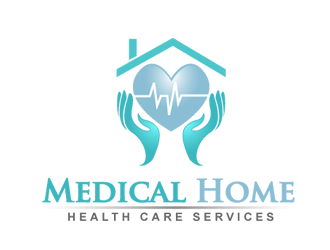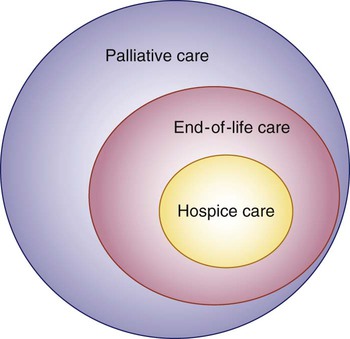
Most autism cases are diagnosed later in girls than they are in boys. Early diagnosis of autism is usually associated with more severe cognitive impairment. But, earlier diagnosis can help avoid the development of more serious cognitive problems. 13 sites collected data that did not reveal any disparities in autism diagnosis age. However, further analysis found that Black and Hispanic children are less likely to have a documented diagnosis.
Language delay
Even though it can be difficult to determine if your child is at risk for ASD, or language delay in general, developmental screening can help you identify the right treatment. This can assist you in making informed treatment decisions. Early intervention and diagnosis are highly effective. A child should be evaluated between 18 months and 2 years of age. You can also look out for signs of language delay at home.

Education level
Autism can cause a child to become socially isolated and be reluctant to meet new people. This can make it difficult or impossible to assess their readiness to engage in social interaction. Some children can appear passive and not interested in initiating interactions, while others might seem quiet and detached. Whatever the case, it is important for parents and teachers to know how to assess the child and find the best treatment options.
Gender
Although there is a wide range of differences in the proportion of autistic males to their female counterparts, the current estimate is around 3:1. One of the earliest researches on autistic kids found that there were four boys for every one girl. But the ratio has since been lowered.
General cognitive ability
Correlation between general cognitive ability and age at diagnosis of autism is evident. This is due a correlation between ASD's common genetic variation and the higher general cognitive abilities of the non-clinical community.
Migrant background
A significant connection exists between autism diagnosis and migrant background, especially for children. About one in four American children have parents who are immigrants. The official national prevalence of autism is one in 68 children. The prevalence of autism is different for different groups. Individual states also report varying numbers.

Language impairment
Language problems are an important feature of autism. These deficiencies, which are often the first sign of autism, can be a key indicator of a child’s development course and prognosis.
FAQ
What are the three levels in health care facilities
First, there are general practice clinics that provide basic medical care for patients who don't need hospital admission. They can also refer patients to other providers, if necessary. This can include nurse practitioners, general practitioners, and midwives.
Primary care centers are the second level, which provide comprehensive outpatient care and emergency treatment. These include hospitals, walk in clinics, urgent care centres, family planning clinics and sexual health clinics.
The third level includes secondary care centers that offer specialist services like eye surgery, orthopedic surgery and neurosurgery.
What are the major functions of a system for health care?
The health care system should provide adequate medical facilities for people who need them at a reasonable cost while ensuring access to quality services by all.
This includes providing health care and promoting healthy lifestyles. It also includes equitable distributions of health resources.
What do you consider to be the most important public health issues of today?
Many people are affected by obesity, diabetes and heart disease. These conditions account for more deaths annually than AIDS and car crashes combined. Additionally, smoking, poor diet and inactivity can lead to high bloodpressure, stroke, asthma or other problems.
How do I become a creative health professional?
There are many paths to creative health professionals. Many people begin their career as students. Others start out in business or engineering.
Some students choose to focus on a specific topic such as health policy, leadership, management or leadership. Others decide to take an elective course that explores different perspectives on health and health care.
No matter your chosen path, you'll be able to learn about health topics and health care through readings, discussions in groups, assignments and projects, as well as lectures and readings. Workshops, conferences, seminars, and other events are also possible.
The program will equip you with the knowledge and skills you need to interact with clients, colleagues, or patients in any capacity within the health sector.
You might even be able to go on to get a doctorate.
Statistics
- Over the first twenty-five years of this transformation, government contributions to healthcare expenditures have dropped from 36% to 15%, with the burden of managing this decrease falling largely on patients. (en.wikipedia.org)
- The healthcare sector is one of the largest and most complex in the U.S. economy, accounting for 18% of gross domestic product (GDP) in 2020.1 (investopedia.com)
- For the most part, that's true—over 80 percent of patients are over the age of 65. (rasmussen.edu)
- Foreign investment in hospitals—up to 70% ownership- has been encouraged as an incentive for privatization. (en.wikipedia.org)
- About 14 percent of Americans have chronic kidney disease. (rasmussen.edu)
External Links
How To
What are the 4 Health Systems?
Healthcare is a complex network that includes hospitals, clinics and pharmaceutical companies as well as insurance providers, government agencies, public officials and other organizations.
This infographic was created to help people understand the US healthcare system.
These are some key points.
-
The annual healthcare expenditure is $2 trillion. This represents 17% the GDP. It's nearly twice the size as the entire defense budget.
-
Medical inflation reached 6.6% for 2015, more than any other category.
-
Americans spend on average 9% of their income for health care.
-
In 2014, over 300 million Americans were uninsured.
-
Although the Affordable Care Act (ACA), has been passed into law, it is not yet fully implemented. There are still large gaps in coverage.
-
The majority of Americans think that the ACA needs to be improved.
-
The US spends a lot more money on healthcare than any other countries in the world.
-
Affordable healthcare for all Americans would reduce the cost of healthcare by $2.8 trillion per year.
-
Medicare, Medicaid and private insurers pay 56% of healthcare expenses.
-
There are three main reasons people don't get insurance: not being able or able to pay it ($25 billion), not having the time ($16.4 billion) and not knowing about it ($14.7 trillion).
-
There are two types: HMO (health maintenance organisation) and PPO [preferred provider organization].
-
Private insurance covers most services, including doctors, dentists, prescriptions, physical therapy, etc.
-
Public programs cover hospitalization, outpatient surgery, nursing homes, hospice care, long-term care, and preventive care.
-
Medicare is a federal program which provides senior citizens with coverage for their health. It pays for hospital stays, skilled nursing facility stays, and home health visits.
-
Medicaid is a federal-state program that provides financial aid to low-income families and individuals who earn too little to be eligible for other benefits.